Unlock & Monetize The Expertise In You
We Help Entrepreneurs And Subject-Matter Experts Monetize The Full Spectrum Of Their Knowledge, Ideas, Skills, Gifts, and Talents
about sidhartha peddinti
Sidhartha "Sid" Peddinti is a philosopher, philanthropist, educator, and attorney known for integrating law, technology, and education to help entrepreneurs unlock and monetize their intellectual potential. Through diverse roles - researcher, writer, speaker, strategist, AI trainer, and investor - he demonstrates how individuals can transform lived experience and expertise into valuable intellectual property.
Sid teaches entrepreneurs how to identify and activate their hidden skillsets, repackaging them into scalable offerings such as courses, keynotes, books, or advisory services. His approach blends philosophy with practical frameworks, encouraging others to harness their full intellectual capacity and break free from the marketing and business noise that traps and suppresses imagination.
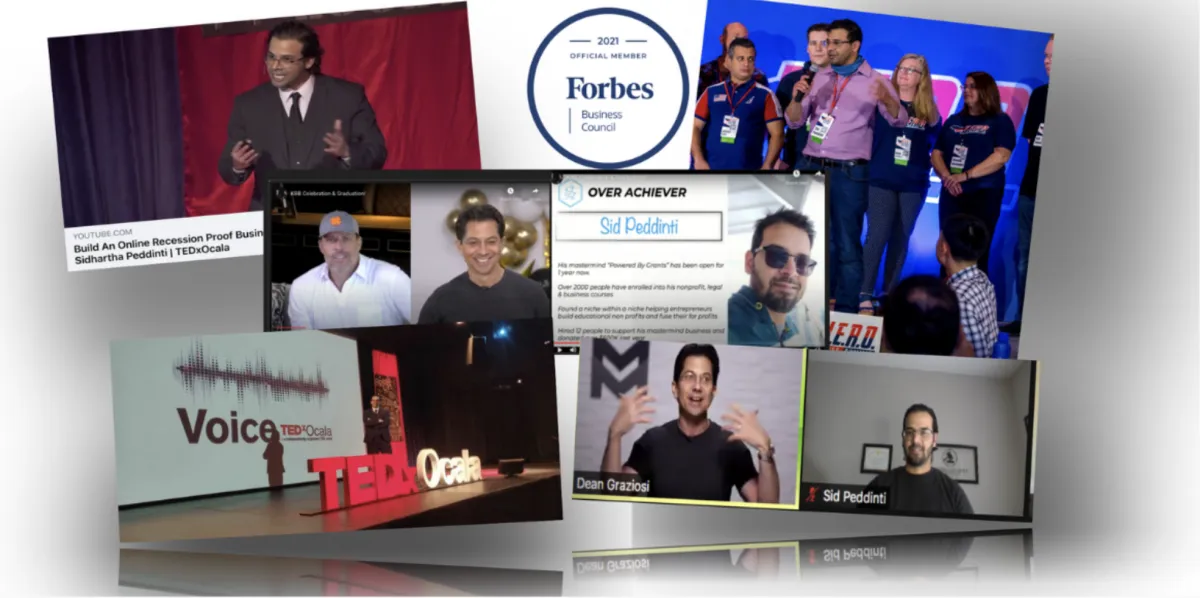
sid shares his business philosophies across various publications, stages, and platforms

We'd Love To Meet The Experts In You™
Jay-Z said it best: "I'm not a businessman. I am the business, man."
So, ask yourself - Are you running a business, or are you THE business?
Behind your professional title - lawyer, doctor, coach, consultant, tech founder - is a deeper vault of insights, ideas, philosophies, and, in our opinion, an entire universe of untapped intellectual personalities and identities who are capable of producing incredibly powerful intellectual property in various formats.
Your experiences, mistakes, breakthroughs, and expertise are assets - waiting to be monetized through books, keynotes, courses, consulting, articles, podcasts, and even software applications.
Yet most entrepreneurs get trapped in noise - “double your leads,” “niche down,” “go viral.” These distractions hide and suppress your true potential.
The truth? You’re not one brand, one company, or one title -
You’re a mosaic of intellectual identities and subject-matter experts.
The philosopher, the strategist, the content creator, the researcher, the media buyer, the innovator, the influencer, the speaker, the writer, the philanthropist, and the philosophical leader.
The real brains behind the "business" is not your marketing guru, sales company, or even your "million dollar coach" - it's YOU.
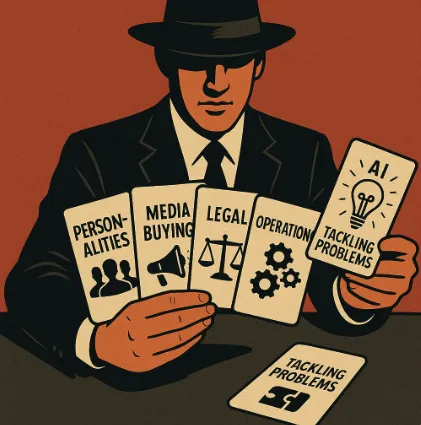
We'd Love To Meet The Experts In You™
Think of it like a deck of card, and each card represents a skills, a talent, a million-dollar idea, a discovery, a story, an experience, a win, a loss, failures, setbacks, and even 'breakthroughs'.
The "experts" you have been searching for to help you reach your true potential and that "next level" across all domains - finance, happiness, freedom, recognition, peace of mind, legacy, growth, wealth, health, etc. - are already within you.
Our mission, focus, and quest that been to find different pathways, business philosophies, and systems that can help entrepreneurs and subject-matter experts unlock these "expertise" and monetize in various formats - independent of each other, or interlocked and in-sync with each other.

Here are the 5 stages of unlocking the Expertise In You™
Awaken The Experts In You
Identify Who Is Hunting For Them
Package The Expertise
Leverage The Opportunities
Monetizing Yourself - You Are The Business, All Of You, Each Expert Sitting In You, and All The Insights You Possess.
Take a short quiz to identify the hidden "Experts In You" and how you "package,
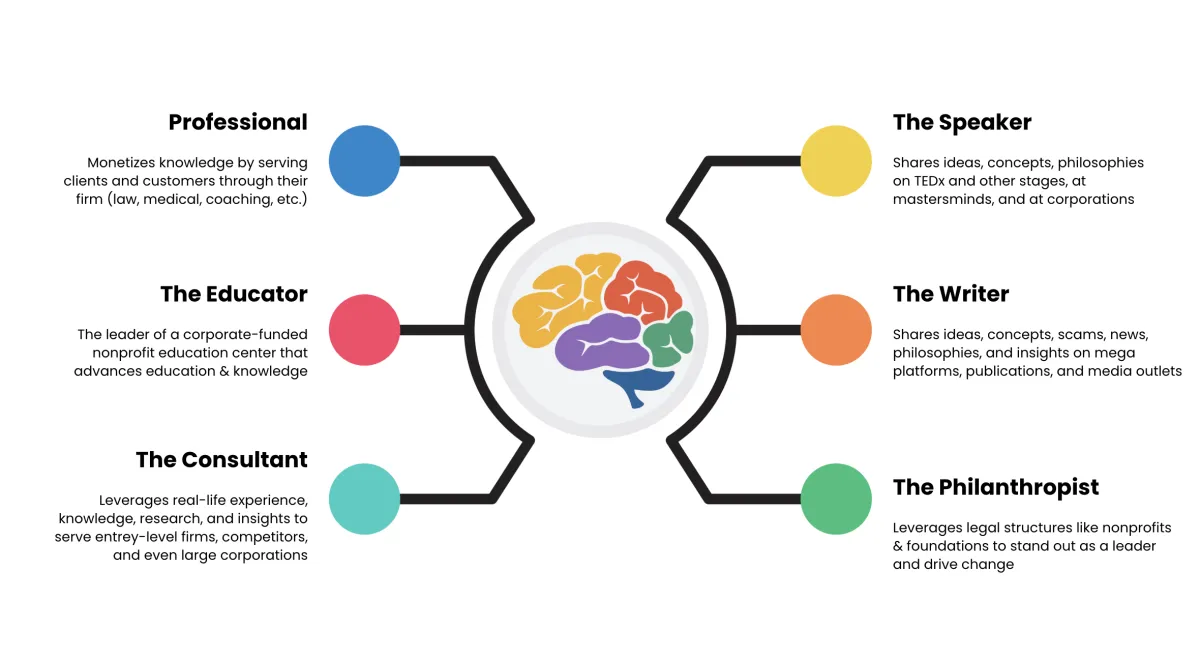
Go From Limited To Unlimited

Let's look at the example of a law firm owner, who can repurpose and repackage their knowledge and insights into several different formats that can be monetized. Here are the various avenues to monetize his/her insights and knowledge:
Professional services: Offer premium legal services through a law firm (business law, contracts, estate planning, trademarks, etc.)
Marketing consulting: Provide branding, audience, marketing, technology, or AI consulting around building a law firm to new firms entering the market.
Writing: Publish your insights on platforms like Entrepreneur, Forbes, or Business Insider to build credibility and influence, while positioning yourself as a contributor.
Speaking: Speak at conferences, masterminds, fortune 500 corporations, and stages like TEDx, on legal, business, operations, or leadership topics.
Educational platform: Host courses, workshops, podcasts, or masterminds through a legal education nonprofit funded by grants and donations.
Impact investing: Use a private foundation to turn taxable income into impact capital - supporting causes you care about while reducing taxes.
Scale Your Name, Not Just You Ad Campaigns
To become the business and "own your digital name", you have to start advertising and showcasing your brilliance - the skills, knowledge, and insights you have gained, not just the services you offer to a handful of clients - for example: estate planning, FB marketing, or coaching work through your firm.
Every "gap" requires a different "hat", a hat which you already have in you - the vaious identities and personalities that you have developed over the years
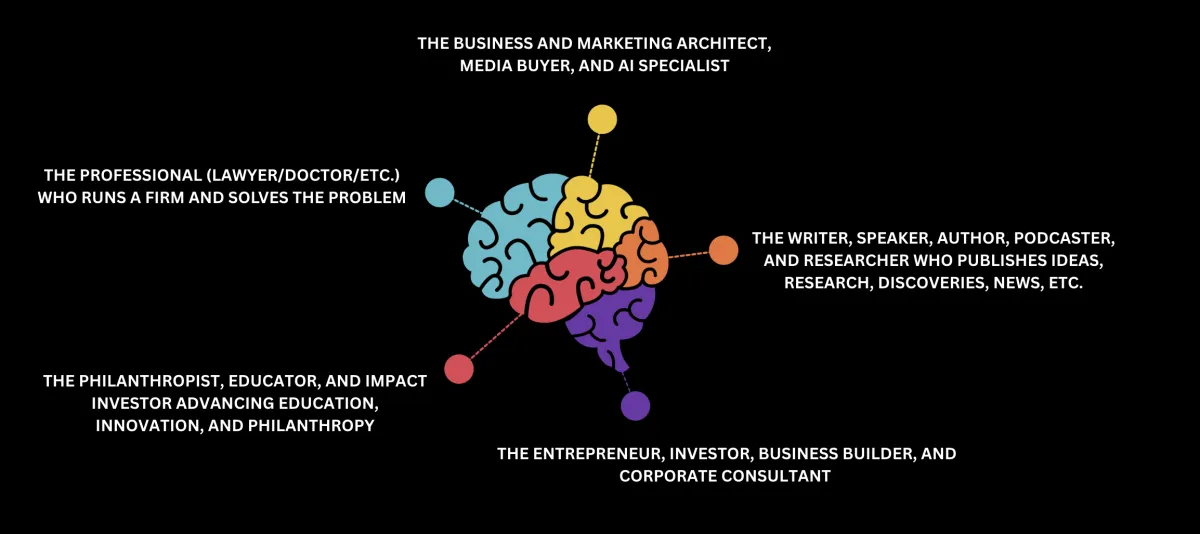
Most entrepreneurs and business owners are bombarded with advertising and marketing content that builds "fear" - the fear of missing out or called "FOMO". They are tempted to spend on the shiny new marketing strategy or tactic that is "doubling and tripling" other companies in their niche. They end up buying it, shelving it, and become hesitant in their decisions.
That's the rat race that traps business owners from monetizing their true potential and unlocking abundance and growth on all fronts - without major barriers.
What if there was a way to bypass and eliminate all the "noise" and directly publish, leverage, and monetize your knowledge and ideas without the "FOMO" - free from the rat race, not easily persuaded by the 7-figure business awards being handed out by marketers - completely free from the hype and immune to the noise?
That can happen when you stop operating a business, and decide to "BECOME THE BUSINESS". This involves awakening, identifying, packaging, and monetizing your existing skills and insights into various formats - the word "client" gets expanded to the entities that are in need of your IP, not just clients who hire you to work on their case or business matters.
Embrace the full spectrum of your inner genius - there's a lot more to you than meets the eye.
The educator
The trainer
the investor
the mentor
the marketer
the ai trainer
the influencer
the philanthropist
the growth strategist
the author
the keynote speaker
the freelance writer
the media buyer
the systems architect
the impact investor
Have You Leveraged These Opportunities?
$10,000
In (Free) Google Ads Every Month To Advertise Educational Content?
$2-3
Per Word For The Articles Or Blogs That You Write In Major Media Outlets
$15,000
Per Keynote Speech, On Average, Paid By Fortune 500 Corporations
30%
Taxable Income Reduction Every Year When You Donate To Your Foundation
Join Sid
I am obsessed with law, technology, and nonprofit-infused growth strategies and love sharing my experiences as an entrepreneur, investor, lawyer, and philanthropists and answering your questions.
Join me online and let's grow and thrive together.
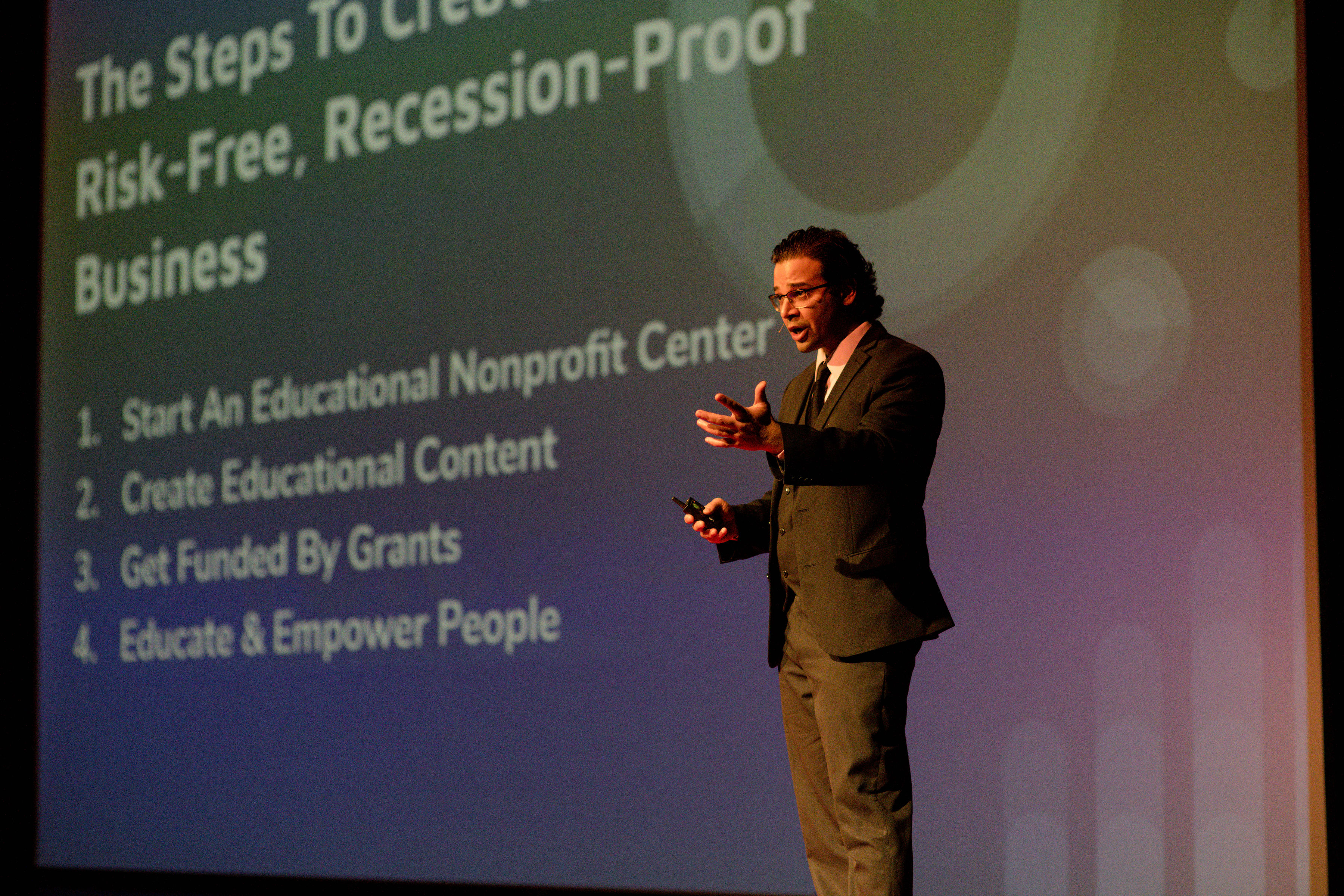
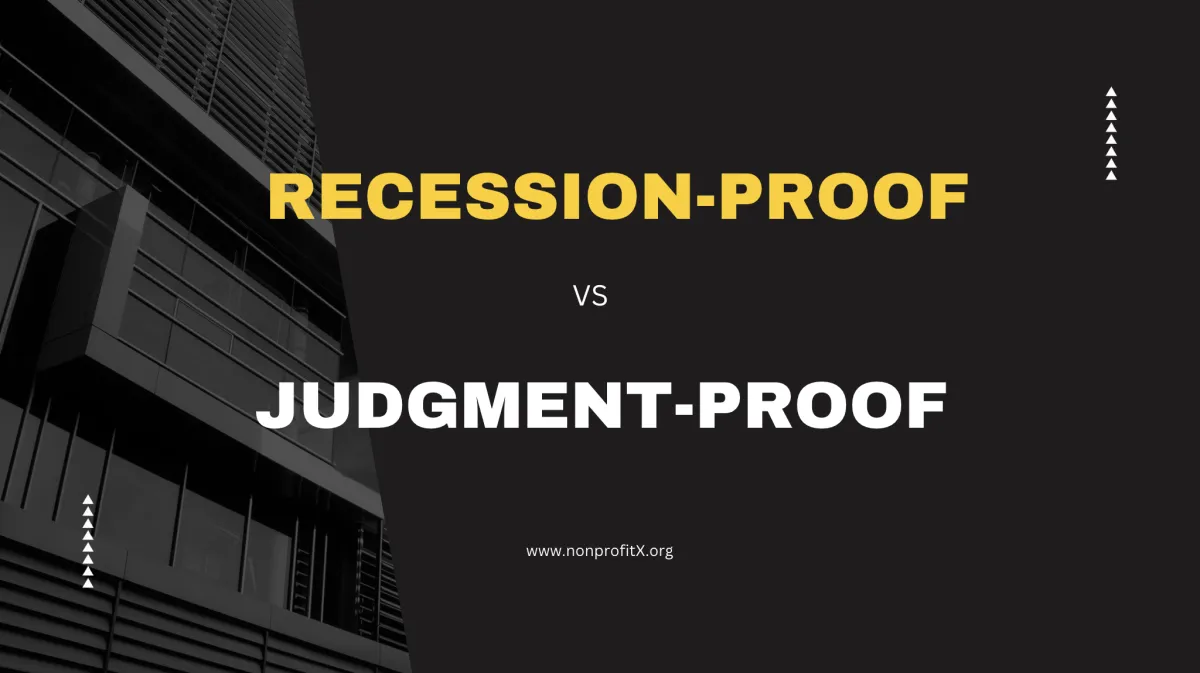
Recession-Proof vs Judgment-Proof
The Bankruptcy-Proof Business Model: How I Discovered That Operating Through a Nonprofit Eliminates Financial Risk and Maximizes Impact
Recession-Proof vs Judgment-Proof
Introduction: The Hidden Dangers of Traditional Business Models
Chapter 1: Understanding the Stages of Business Failure
Stage 1: The Debt Trap (Using Bank Loans & Funding)
Stage 2: The Self-Funding Struggle (Using Personal Savings & Profits)
Stage 3: The Investor Illusion (Raising Capital from Investors)
Stage 4: The Tax Burden of Success
Chapter 2: The Nonprofit Alternative - A Bankruptcy-Proof Model
Why Operating Through a Nonprofit Eliminates Risk
How Nonprofits Generate Revenue Without Traditional Profit Issues
Chapter 3: Structuring a Nonprofit for Maximum Financial Security
Pay Yourself a Salary—Legally and Sustainably
Conclusion: Why Nonprofits Or Hybrid Models Are the Future of Business
Introduction: The Hidden Dangers of Traditional Business Models
Entrepreneurs dream of building successful businesses, achieving financial independence, and making an impact. Yet, many overlook the fundamental flaws of traditional business models that make them financially vulnerable.
Bankruptcy is often seen as the result of poor management or bad luck, but the truth is, even cash-flow-positive businesses can collapse due to structural weaknesses.
After experiencing bankruptcy firsthand, I discovered a game-changing approach—one that allows business owners to build, scale, and generate income while minimizing financial risk: operating through a nonprofit.
This article will break down:
The stages of business failure and how personal liability creeps in
The different funding models entrepreneurs use - and their risks
The tax traps of success that many business owners don’t see coming
The nonprofit alternative that unlocks Other People’s Money (OPM) and Other People’s Resources (OPR)
How to structure a nonprofit for financial security, scalability, and control
By the end, you’ll see why leveraging a nonprofit model is the ultimate risk-proof strategy for entrepreneurs, investors, and business owners.
For context: The thoughts, ideas, concepts, and research shared in this article has been derived from my personal and professional experience as a Bankruptcy Strategist and Business Lawyer and working with thousands of people in various industries since 2005.
I entered the world of bankruptcy consulting and explored these strategies explored below after suffering a multi-million dollar bankruptcy and losing it all. That experience put me on a path to discover how to build a "risk-free, recession-proof, bankruptcy-proof, and judgment-proof" business.
Chapter 1: Understanding the Stages of Business Failure
Stage 1: The Debt Trap (Using Bank Loans & Funding)
Many entrepreneurs turn to bank loans or lines of credit to finance their businesses. While this approach fuels growth, it comes with a dangerous downside - personal liability.
Most banks require personal guarantees, meaning if your business fails, they can seize your personal assets - home, savings, retirement funds.
Business owners underestimate the impact of rising operational costs, leaving them unable to service their debt. The "sales cures all" mentality is nothing but a fancy pitch - most businesses are operating with profit margins as low as 5-15%.
Economic downturns, industry shifts, and unexpected costs create an unstable financial environment that can further expand the debt owed to banks and creditors.
Contrary to popular belief, having limited liability companies and layers or partnerships or even fancy trust structures are not 100% bullet-proof - especially if you do not know how to use these entities.
Finally - most entrepreneurs have no formal training on how to use these structures and the vast is too vast to be in 100% compliance on every single front - leaving your wealth and assets exposed in a lawsuit.
Example: According to the U.S. Small Business Administration (SBA), over 50% of small businesses fail within the first five years, and debt is a major factor (Source).
Stage 2: The Self-Funding Struggle (Using Personal Savings & Profits)
For those who avoid debt, self-funding seems like a safer option. However, this approach is slow, capital-intensive, and risky:
Growth is limited to available funds, which slows down scaling and expansion.
If the business fails, the entrepreneur loses their personal savings and any financial security.
Personal credit lines become entangled in business expenses, damaging long-term financial stability.
Stage 3: The Investor Illusion (Raising Capital from Investors)
Venture capital (VC) or private equity (PE) funding is often seen as the golden ticket. But even with investor backing, there’s no guaranteed success:
Investors demand control - often making decisions that don’t align with the founder’s vision.
Entrepreneurs dilute their ownership, reducing long-term profitability.
Investors expect high returns, creating pressure for rapid growth that isn’t always sustainable.
And, you the founders may also hold personal liability and may have invested their savings or assets into the business as well.
Stage 4: The Tax Burden of Success
Even when businesses succeed, entrepreneurs face a new challenge - tax liability. As profits increase:
Business owners enter higher tax brackets, forcing them to find ways to reduce taxable income.
Many turn to tax shelters and loopholes, some of which are gray areas or outright scams.
Poor tax planning results in IRS audits, penalties, and financial instability.
Furthermore, reinvesting savings into diverse asset groups adds additional layers of stress, not just wealth.
Example: The IRS audits thousands of small businesses annually, often targeting those with aggressive tax reduction strategies (Source).
Chapter 2: The Nonprofit Alternative - A Bankruptcy-Proof Model
Why Operating Through a Nonprofit Eliminates Risk
Instead of navigating these financial traps, entrepreneurs can leverage the nonprofit model to unlock funding, reduce risk, and build sustainable wealth.
Access to OPM (Other People’s Money) – Grants, donations, and corporate sponsorships provide funding without debt or personal liability.
Zero Personal Liability – A nonprofit is a separate entity. If it fails, your personal assets remain protected (as long as there is no fraud or self-dealing, etc. involved).
OPR (Other People’s Resources) – Partnering with corporations, institutions, and other nonprofits unlocks funding, expertise, and infrastructure.
Goodwill and Trust – Nonprofits attract support from government agencies, foundations, and corporations.
How Nonprofits Generate Revenue Without Traditional Profit Issues
A common misconception is that nonprofits can’t generate revenue. In reality, they can:
Earn income through services, events, and educational programs
Receive tax-deductible donations from individuals and businesses
Apply for government and private grants
Pay salaries to employees and founders
The difference? Instead of distributing profits to shareholders, earnings are reinvested into the mission-which also means massive tax advantages.
Example: Over $500 billion is donated annually to nonprofits in the U.S. alone (Source).
Chapter 3: Structuring a Nonprofit for Maximum Financial Security
To truly benefit from the nonprofit model, it’s important to structure it correctly:
Choose the Right Type of Nonprofit
501(c)(3) – Best for education, philanthropy, and social impact (offers tax-exempt status and grants eligibility).
501(c)(4) or 501(c)(6) – Suitable for advocacy, business networking, and industry groups.
Or you can also build a Hybrid Model: Combine a nonprofit with a for-profit to create a balanced ecosystem.
Example: The nonprofit handles educational programs and grant funding, while the for-profit manages consulting services.
Pay Yourself a Salary—Legally and Sustainably
Founders can receive compensation as long as it aligns with IRS regulations.
Salaries must be reasonable and comparable to industry standards.
Conclusion: Why Nonprofits Or Hybrid Models Are the Future of Business
Traditional businesses come with unavoidable risks - bankruptcy, debt, tax burdens, and personal liability. The nonprofit-hybrid model offers a smart, risk-free alternative that allows entrepreneurs to:
✅ Build financial security without personal risk
✅ Leverage grants, donations, and partnerships instead of debt
✅ Generate income legally through salary and program revenue
✅ Expand influence and goodwill in the community
✅ Create a sustainable, long-term impact
The biggest shift? Instead of asking, "How can I make the most money?", ask "How can I create sustainable value while eliminating risk?"
The answer lies in the nonprofit model—a bankruptcy-proof, risk-free system that enhances, rather than replaces, traditional business models.
If you're ready to future-proof your business while maximizing impact, it’s time to explore the nonprofit path. Send us a quick note if you'd like to explore what the "bankruptcy-proof" nonprofit education model looks like.
Innovation
Fresh, creative solutions.
Integrity
Honesty and transparency.

Excellence
Top-notch services.

FOLLOW US
COMPANY
CUSTOMER CARE
LEGAL
Copyright 2025. **Nonprofits&Foundations: 2025. All Rights Reserved.
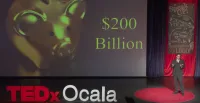
Facebook
Instagram
X
LinkedIn
Youtube
TikTok